Hi, everyone!
Cate has been featured as one of the covers on Perfect Issue Two. You can read the accompanying interview with the photoshoot below. A few film posters are also made. The magazine is available to purchase here.
Perfect Issue Two
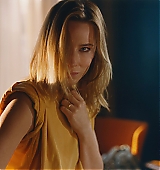
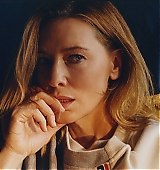
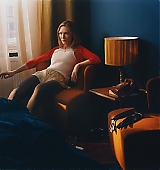
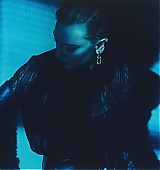

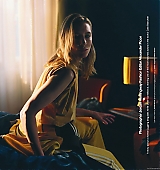
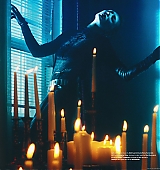
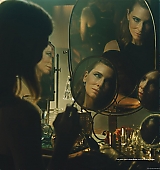
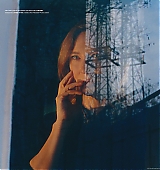
Towards the end of a brief, if instructive, telephone exchange with Cate Blanchett, the actress drops in a small life detail which explains a sizeable corner of her story. Blanchett has an unblemished media profile. She is loved by audiences and industry alike for her work, while left alone to her private life without seeming either cautious or guarded. She has spoken up on weighty issues while appearing neither sanctimonious nor overly punctilious. She is allowed both a sense of humour and circumspect seriousness, knowing as if by instinct exactly when to powerfully deploy both.
So our conversation begins with a genial exchange about her loyal, old, incontinent dog, Fletcher, who is starting to develop some other old-man issues.
‘I watched The Father again the other day,’ she says breezily. ‘It’s such a beautiful film and the performances are all so perfect. I’ve started to call our Labrador Anthony because he has dementia. As in Hopkins.’
He doesn’t sound like the easiest pet.
‘I know. But I love him. I adore him. Now that we’ve all turned our Zoom cameras off and resorted to the old-fashioned telephone – which is a relief, frankly – I was having quite a high-powered conversation with someone. It went silent and so I had to ask, “What has happened to you?’”And she had to say, “The cat’s just been sick in my hand.”’
It is the week before Christmas, 2021. Blanchett has just wrapped Todd Field’s Tár, an experimental film about the first German female orchestra conductor, a script she describes as ‘undeniable’. Her latest theatrical release, Don’t Look Up, a talking-point satire on the climate catastrophe with a peerlessly starry cast, is about to drop onto Netflix on Christmas Eve. It has yet to split opinion directly down the middle. Within seven days of talking to her, it turns into the cultural touchstone of this year’s festivities, the film on which everyone must have an opinion. Again, it is the kind of perfect social media storm from which Cate Blanchett has somehow managed to stay eternally, imperviously at arm’s length.
I’d asked the actor if she kept a journal throughout her work, making personal records of her professional experience. Blanchett has been central to some of the most profound cinema of the late movie age, her portfolio taking in both epic blockbusters and arthouse curios with an even hand, bringing something unique and imperceptible to both. Her best performances, in Todd Haynes’ Carol, for which she was Oscar-nominated, and Woody Allen’s Blue Jasmine, for which she won, mine a tricky vein of human behaviour, lodged somewhere at the sticking point between repression and expression, a point where neither quite triumphs.
She is one of the big screen’s few certainties at a time when cinema’s crown is slipping, as the medium resistantly twists from collective, committed experience to more spurious, dip-in-dip-out home entertainment. Blanchett is primed to have documented this epoch in detail. Her production company moved deftly into television with the startling birth-of-US-feminism story, Mrs America, and she has enjoyed a five-year tenure as an artistic director at the Sydney Theatre Company. Yet she will always be most revered for becoming as trusted a pair of performance hands as Hollywood knows.
Has she kept a diary throughout it all?
She laughs aloud. ‘Hahaha, I wish.’
One of Blanchett’s great professional skills is to give complicated material a strangely relatable twist, to find the human burrowed away in the emblematic. I first noticed her do it in The Talented Mr Ripley, when she played romantic deception and being taken for a fool with skittish ire rather than boo-hoo breakdown. The script could have gone either way.
In Don’t Look Up she plays a daytime TV host with toxic bleached hair and figure-hugging scarlet skirt suit who treats the impending end of the earth as oddly sexual. The film has been criticised for some of its broadsides. Blanchett is categorically not one of them. It is Blanchett’s character who notices the hotness of Leonardo DiCaprio’s space scientist behind the beard, christening him an AILF (‘astronomer I’d like to fuck’). With finely honed, demented determination, she manifests the action speedily, decisively and with some enviable truculence. Again, it feels like a new performance route, underlining the transactional nature of sex among high-flying professionals.
‘I have an actor friend,’ she says, on the subject of keeping a personal record of work. ‘A male friend. He was very studious about that. Back in the days when you put cuttings in scrap books, he was always about recording the things that he had done, probably to make them real for himself. In a way, it was controlling it.’ She doesn’t specify who the actor was. ‘Ultimately, I think he was quite interested in legacy. Whereas I’m more interested in the experience. I don’t know. I think it’s all quite ephemeral and random. It’s not for me to record those things.’
She pauses politely, but the point is made. Her career is about getting good work done, not celebrating the fact that good work has been done.
‘Maybe I should?’ she asks, flipping into the conversation the possibility that she might have been getting her attitude to work wrong all this time. To which one can only respond: as if.
For awards season 2022, Cate Blanchett has two steady horses in the race. The first is Don’t Look Up, the first full commercial crossover from the politically minded director, Adam McKay. Its contention has been utterly delightful, suggesting it will be the one film from 2021’s patchy cinema sketchbook that we may still be talking about in 2041. McKay uses some of his collaged, found-material signature style and abstract taste for pricking pomposity to propel an energetic story about a meteorite heading towards earth.
McKay’s move to major-league director has had deep audience repercussions, which may yet come to help or hinder its reception at The Academy. It hardly matters. Whichever side of the Don’t Look Up fence you sit on – for what it’s worth, I loved it – the film’s prominence during a cultural year dominated with the reheated leftovers of the late 20th-century mass market (Abba, West Side Story, The Beatles, Dune, James Bond etc) arrived like a breath of fresh air. As another year trundled to its slow, diseased end, at least someone was talking about something that mattered in the here and now.
Blanchett’s second awards contender is the delightfully prickly Nightmare Alley, a story of one man’s complete moral collapse – already notorious prior to release for a brief first cinematic sighting of leading man Bradley Cooper’s penis in an early bathtub scene. It is the virtuoso cineaste Guillermo del Toro’s follow-up to his atypically sweet-natured fantasia The Shape of Water, the last Oscar-winning Best Picture prior to Covid. Del Toro is back to his noir finest with the picture, letting his visual imagination run wild, this time in the mis-en-scène of a mid-century circus.
Blanchett’s co-stars in both, besides Cooper and DiCaprio, read like a roll-call of modern screen celebrity: Meryl Streep, Timothée Chalamet, Ariana Grande, Jennifer Lawrence, Rob Morgan, Jonah Hill, Kid Cudi, Tyler Perry, Rooney Mara, Toni Collette, Willem Defoe, Ron Perlman, David Strathairn. The actress says she selects work starting with the director.
‘In the end, when people ask “what sort of roles do you want to play?” I have no idea,’ she notes. ‘It’s about the arc and what comes along. If Guillermo asks you to do something, you say “absolutely – what do you want me to do?” It’s about being part of that conversation, you know?’ She felt the same about McKay. ‘I thought that was a story that I wanted to be a part of telling. That was a director I wanted to work with. The cast evolved to be, like Nightmare Alley, extraordinary. But it all starts with the director. It’s a double whammy.’
Del Toro had been attached to The Lord of the Rings trilogy, the films which sent Blanchett’s star astral in the early 2000s, before being replaced by Peter Jackson. ‘By the time I came along it was back in the hands of Peter, so I don’t know what happened there,’ she says. ‘But I think that Guillermo had been there for a while, that was the early stages. We’d been talking for a while about working together. There was talk of a television series, one thing and another several years ago, which didn’t come about. It was so wonderful to finally make something together. Without wanting to sound pretentious, I was so excited to be a part of Guillermo’s cinematic vision.’
She describes Nightmare Alley as ‘first and foremost about this self-made monster’. Cooper plays Stanton Carlisle, a hot, shady brute with Indiana Jones headgear and a past, who arrives at a carnival to teach himself the skills of the circus. As he leaves the fair to make his way in the city with his belle on his arm, he encounters Blanchett’s Lilith, a sly, vampish psychoanalyst who spots a phoney. She determines to untangle the immaculately ruthless showman Stan has become; to reveal, like the Wizard in Oz, the charlatan beneath.
‘There are three very different types of women that Stan encounters,’ says Blanchett. ‘He encounters almost a mother figure [Colette], an innocent [Mara] and then an ambiguous, unknowable, world-weary woman [Blanchett] with dark secrets and untold damage. Each of the women and each of those relationships are quite particular. I hope I fulfilled that function.’
She says the moment she stepped on set she was absorbed into the world of Del Toro’s twisted imagination. ‘Oh, totally. I spent all my time, really, with Bradley in one room. That room, when the doors shut, was just us.’ They make spectacular sparring partners, attempting to outsmart one another in a series of balletically choreographed psychosexual set-pieces. ‘There was no need for bits of green-screen. No wondering how the film might come to life. No worrying that you might not feel it. It’s intimate. All of those details are there for you. It’s not like somebody else comes along and inspects the set. Guillermo is over every single detail.’
Even at script-reading stage, the wonderfully dystopian world of Nightmare Alley was alive to her. ‘The thrust of the scenes and their function within the whole narrative is really clear. You get the reader’s script and [are] compelled by the narrative. In terms of the detail of the dialogue, that was finessed on the set.’ She describes working for Del Toro as a surprisingly fluid affair. ‘Really, he’s incredibly open to seeing how the actors might want to move in the space. For Bradley and I, all of our stuff happens in that one office. It was a luxury in a way. We got to work it out. There were a specific number of scenes we had together – how does that feel? How does it move? How does it look?’ Hearing her process is both engaging and informative. ‘We were constantly playing and rehearsing, even when we were shooting.‘
Blanchett is gifted the best line of the film as her exit, while wrapped in a telephone wire. ‘From memory, I think that came up on the day,’ she says. ‘I was being strangled by a cord but not wanting to make it a purely violent scene, to make it complicated. The character of Lilith really pushes Stan to the edge. She wants him to reveal the things that make him who he truly is so that he can see who he truly is. He can’t hide from himself any more. When he starts to really become that weak, that’s the most terrifying part of the journey for him. But she has to push him that far at her own peril.’ Viewers will be routinely forgiven for spotting an allegory for old Hollywood in the story.
The part of Lilith is almost quintessentially Cate Blanchett, feeling at once as if it is lifted from another time and place, a golden age of cinema which she could have quite happily glided through; hair set just so, red lips immaculately applied. She avers at the observation. ‘I don’t know what that is. What does that mean?’
It’s almost super-you.
‘Super-me? I don’t know if that’s an insult or a compliment.’
Rarely does Blanchett sound as in control of a conversation than when she undercuts herself. It’s quite the skill.
Cate Blanchett was one of the earliest voices in cinema to speak up on the disasters of the environment. As her fame escalated, she brought her conscience along for the ride. Her role in Don’t Look Up brings with it a depth and acuity few others could offer in her steely interpretation of the tin-eared newscaster. ‘I think actors are hungry for big stories,’ she says. ‘I think audiences are, too. I don’t mean big stories that are long. I just mean high stakes. Big images where you can dispense with language. In a way, narrative can be suspended, almost.’
Few issues come bigger than the climate, yet so little art is made about it. ‘Yes,’ she says conclusively. ‘I don’t know that there’s been a moment in history that has been this collectively faced, where culturally it hasn’t been addressed.’
The great abandonment of the climate by the arts might be attributable to the idea of the end of the world being such a trope in film already. Every superhero narrative follows an arc of a threat to the world and the superpower who can save it. ‘The end of the world has always been shrouded in notions of the future, whereas the end of the world now feels possible in the near present. It’s very hard to find a laugh or be transported by it. And Adam has somehow been able to.’
With Don’t Look Up, McKay has fashioned the definition of an iron fist in a velvet glove. It has tapped nerves for all the right reasons. ‘Climate change itself gets addressed in essays and long-form journalism and journals, but artists themselves have not yet addressed it through narrative or fiction or works of cinema.’ Cate Blanchett understands the reasoning. ‘I think it’s because it’s become, unfortunately, a political battleground. So somehow, if you discuss it or imagine a way of setting a story within that landscape, it automatically becomes agit-prop.‘
Protesting war is sexy. Protesting injustice and prejudice is righteous. Protesting the planet is complicated, murky and enormous. ‘Where Adam has come so far is by making a film that’s about climate change that is not about climate change. And it’s funny and it’s witty and it’s really, ultimately incredibly moving.’
It is also prescient. ‘Every two or three weeks I’d text him when something new happened,’ she explains. ‘You know, there was a point where a meteorite was coming close to the earth’s orbit? And I said, “Did you have a crystal ball?” He wrote this and we were meant to film it pre-pandemic. Then it got pushed and pushed and pushed. He imagined all of this. He had this in his mind for quite some time. I find that kind of incredible, actually.’
The reason Cate Blanchett has a blemish-free media slate is mostly because she has a blemish-free belief in the power of storytelling.
What has acting taught her about the extremes of the human condition?
‘That you can’t rule anything out. You know, we often behave in quite unexpected ways in extreme conditions.’
She plucks an example from the air. ‘It’s like when the car’s about to crash. You expect screaming and yelling, but everyone is suddenly quite calm. There’s quiet. Often, we behave in polar opposite ways than we would anticipate. I think that everything’s up for grabs at the moment, because we are in such an unprecedented world. Though we should have seen it coming, of course, the situation of a species that we have all been through, no matter what our socioeconomic standing or our economic loss or our uncertainty. I think we’re all alive to behaving in ways that are surprising to other people, but also to ourselves.’
Perfect Issue Two – Film Posters
Source: Perfect
 Welcome to Cate Blanchett Fan, your prime resource for all things Cate Blanchett. Here you'll find all the latest news, pictures and information. You may know the Academy Award Winner from movies such as Elizabeth, Blue Jasmine, Carol, The Aviator, Lord of The Rings, Thor: Ragnarok, among many others. We hope you enjoy your stay and have fun!
Welcome to Cate Blanchett Fan, your prime resource for all things Cate Blanchett. Here you'll find all the latest news, pictures and information. You may know the Academy Award Winner from movies such as Elizabeth, Blue Jasmine, Carol, The Aviator, Lord of The Rings, Thor: Ragnarok, among many others. We hope you enjoy your stay and have fun! 


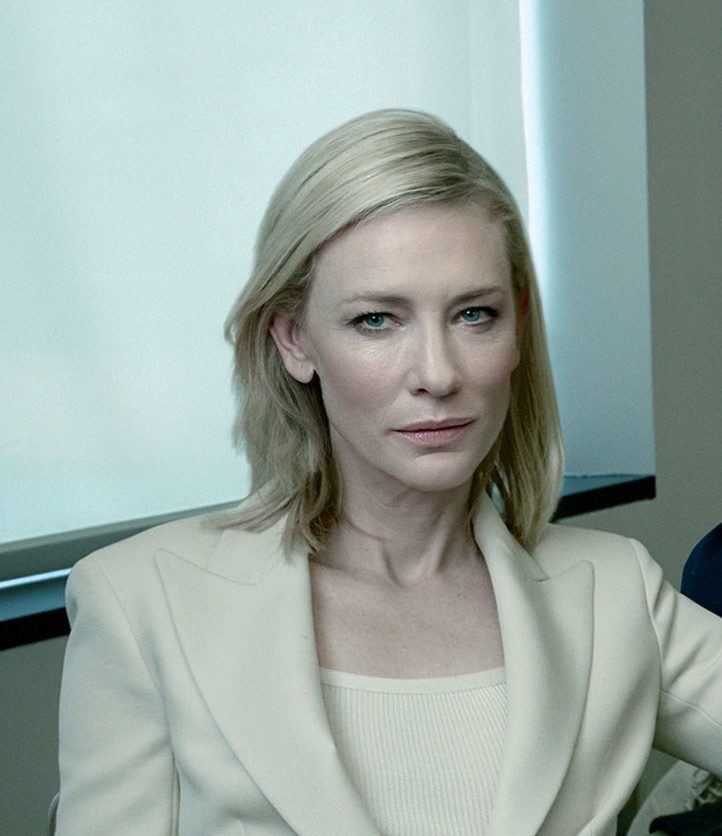
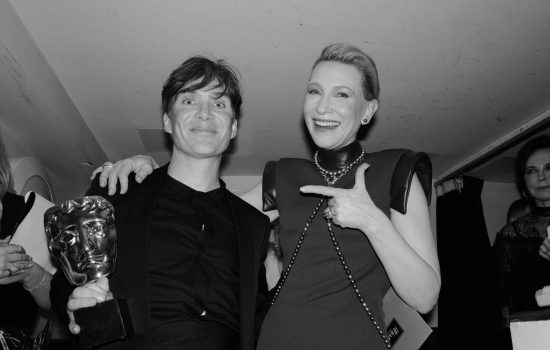
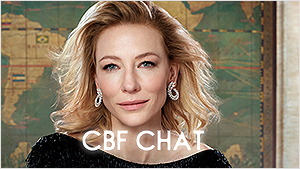
 A Manual for Cleaning Women (202?)
A Manual for Cleaning Women (202?) The Seagull (2025)
The Seagull (2025)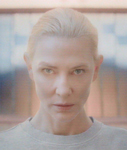 Bozo Over Roses (2025)
Bozo Over Roses (2025) Black Bag (2025)
Black Bag (2025) 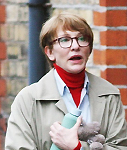 Father Mother Brother Sister (2025)
Father Mother Brother Sister (2025) 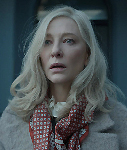 Disclaimer (2024)
Disclaimer (2024) 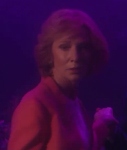 Rumours (2024)
Rumours (2024) 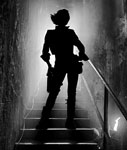 Borderlands (2024)
Borderlands (2024)  The New Boy (2023)
The New Boy (2023) 











